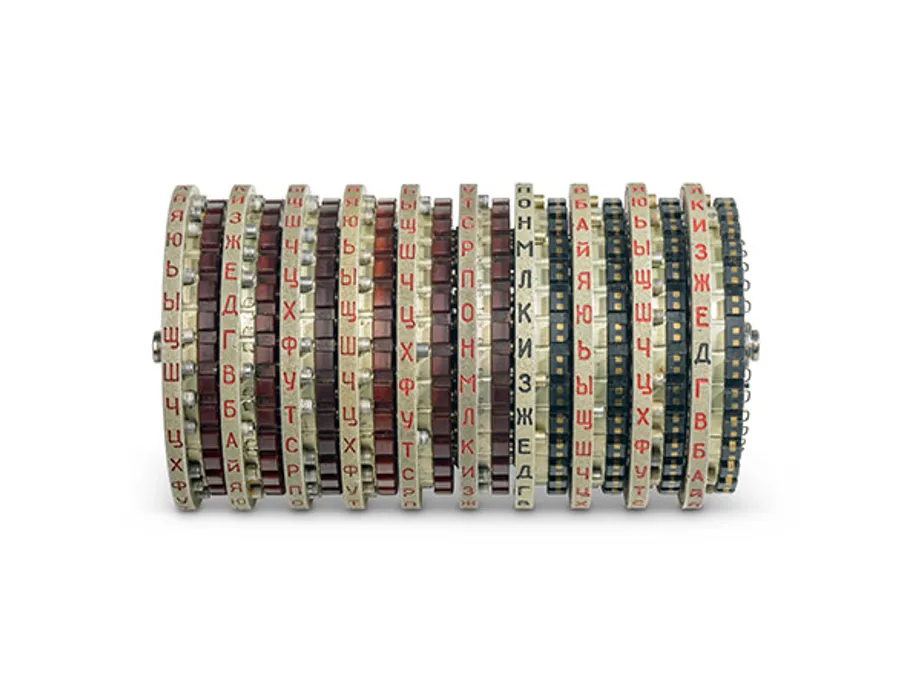Encryption / code breaking
In cryptography, which is the study of analysing information systems in order to study the hidden aspects of those systems, encryption is the process of encoding messages of information in such a way that only authorised parties can read it.
Encryption does not of itself prevent interception but denies the message content to the interceptor.
In an encryption scheme, the message or information, referred to as plaintext, is encrypted using an encryption algorithm, generating ciphertext that can only be read if decrypted in other words, if the code is broken.
Fialka machine
The cipher wheel shown here is from a Fialka machine used in Yugoslavia. The Fialka (M-125) is the name of a Cold War-era Soviet cipher machine although the machines were used well into the 1980s.
The Fialka is generally similar in design to the German Enigma cipher machine but it has 10 rotors with 30 Russian characters/contacts instead of the three or four rotors with 26 letters/numbers/contacts as found in the German Second World war Enigma machines.
Fialka means violet in Russian. Information regarding the machine was quite scarce until circa 2005 because the device had been kept secret.
Donated by Alan Watson

